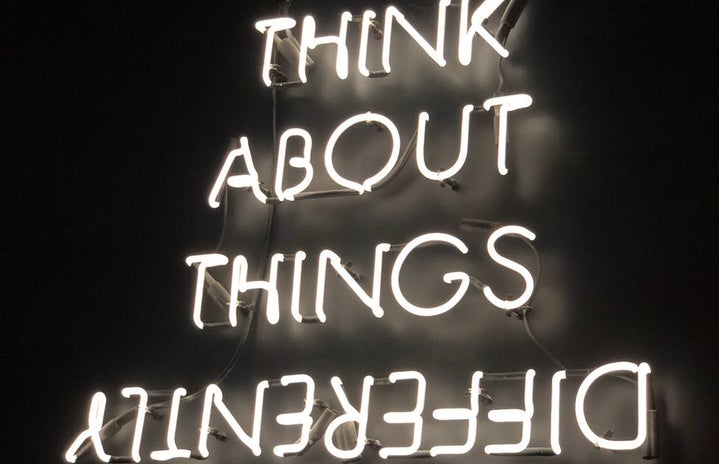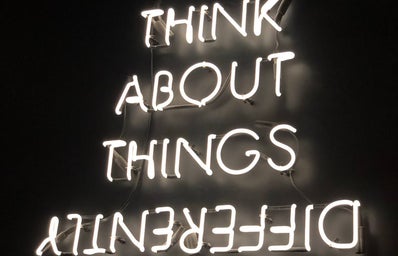From perception of the self to others, human nature often follows behavioral patterns that place individuals in the center of all their interactions, attributing more attention to their own appearance, knowledge, and situation than others. By confronting the reasons for and methods by which we center everything around ourselves, we can alter such behaviors to live both healthier and more realistically.
For those who rely on scientific evidence, social and psychological experiments are the vessels for such confrontations. Many such experiments are covered in social science and business courses to introduce human nature, but I’ve listed below five lesser-known studies that I feel more people would benefit from considering in everyday life.
The Dove Real Beauty Sketches
In 2013, Dove invited women to describe themselves to FBI forensic sketch artists for a short film promoting their campaign for real beauty. Afterward, strangers who they’d only briefly met were brought in to describe those same women, producing juxtaposing images of how the women viewed themselves versus how others viewed them. The exhibition of these images revealed that strangers’ perceptions of women were happier, more beautiful, and more accurate to others than their perceptions of themselves. This proved the commonly used phrase “you are your own worst critic,” as people spend the most time dissecting their appearances, preventing them from clearly seeing the full picture. This idea seems simple but has been tested extensively in psychological experiments to elevate it from optimistic to factual.
The Dartmouth Scar Experiment
Similar to the motives of the Dove Real Beauty Sketches, the Dartmouth Scar Experiment aimed to test whether people’s insecurities had a larger impact on how they felt perceived than others’ actions. In the experiment performed by Robert Kleck in 1985, facial scars were drawn on 48 college students who were told they’d be observing the behavior of others towards people with such scars. The students were briefly shown their scars before being sent out to interact with others in the building uninvolved with the experiment, from which they majorly reported back negative treatment and attention to their scars. However, it was withheld from the participants that their scars were quickly removed after being shown to them, before ever interacting with the outsiders. All the observations that they had gathered about others’ behavior were observations about their insecurities and how they expected to be treated. While the findings of this experiment can’t completely disprove negative attention toward facial scars, they imply that negative self-images can be projected onto interactions with others baselessly. Even if someone is so unaware of your insecurity to the extent of it not even actually existing, it can still convince you it’s the most important part of the entire interaction. Thereby, the strongest implication of this study is that you’ll never truly know how people perceive your insecurities so there’s no use in being concerned about them.
The Violinist at the Metro Experiment
As part of a study by the Washington Post in 2007, world-renowned violinist Joshua Bell played a multi-million-dollar violin at a Washington D.C. metro station, as if he were just another street performer. Though people might expect the educated population of Washington D.C. to react to a free rendition of a typically expensive and exclusive show, they rushed by and disregarded the performance as they would with any other metro artist. The findings of this experiment imply that people are more appreciative and attentive to beauty when it is socially recognized, and that beauty can be vastly ignored if not in a setting highlighting its worth. Additionally, society was more willing to pay to hear Bell perform in a concert venue to appraise his talent than as a form of help in his open violin case on the metro floor. This implies that people have a difficult time seeing beauty in situations of seeking help, as their immediate response in such situations is to just ignore them. Whether people want to admit it or not, they oftentimes see unrecognized art as a nuisance, even if it’s of the same level of skill and value as recognized art. Though the findings of this experiment are more directly applicable to appreciating the art in your life regardless of others’ appreciation, they can also be extended to human beauty. While celebrities and influencers can seem so much more beautiful than non-famous individuals, a certain extent of this can be attributed to the attention and recognition their beauty gets.
Festinger and Carlsmith’s Cognitive Dissonance Experiment
Cognitive dissonance is a psychological phenomenon of internal conflict that comes from receiving information that goes against personal beliefs. To test people’s cognitive dissonance, researchers Festinger and Carlsmith conducted an experiment in 1959 where people were either paid $1 or $20 for completing a series of boring tasks. When people were paid $20, they felt justified in completing the tasks even though they were mundane, because it was worth it in the end. When people were paid $1, however, they claimed the tasks to be more enjoyable and scientifically important and to have taught them more, to justify having spent time on them for only $1. This showed that if people are led to act in a way that goes against their personal beliefs, they’ll likely change their beliefs to validate what they’ve done. The findings of this experiment imply that people rationalize the things they do in everyday life to escape internal conflict with what they wish they’d done. Less directly, the findings also imply that people try to find benefits in the things that happen to them to give mundane situations meaning or purpose and avoid feelings of regret or wasted time.
Dunning and Kruger’s Cornell Experiments
The Dunning-Kruger effect states that those with limited knowledge in a field tend to overestimate themselves, while those with extensive knowledge in a field tend to underestimate themselves. This was discovered in a series of experiments at Cornell University in 1999, during which people who ranked in the bottom quarter of administered test scores tended to predict themselves to have the highest scores. This is because when people first start learning about a topic, they consider how much more they know than what they knew before, which is little to nothing. Alternatively, those who ranked in the top quarter of test scores tended to predict themselves to get slightly lower scores than they did. This is because as people continue learning about a topic, they begin to realize its complexity and consider all there still is to learn, decreasing their confidence in their knowledge. The overall implication of this study is to beware of overconfidence in a topic when first learning about it, as there is often much more to uncover than immediately meets the eye.
Conclusion
These social and psychological experiments, while diverse in nature, converge on a powerful message: our perceptions play the largest role in our reality. By considering their implications, we’re able to rethink our daily realities and thereby reshape how we choose to live our lives. From self-perception to interpersonal dynamics, such experiments can guide a healthier, more genuine existence, reiterating that the way we view ourselves and our situations primarily guides our experiences.


